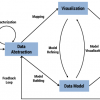Business Transformation Requires Transformational Leaders
Leadership and teaming skills are front and center in times of rapid change. Meet today’s constant disruption head on with expert guidance in leadership, business strategy, transformation, and innovation. Whether the disruption du jour is a digitally-driven upending of traditional business models, the pandemic-driven end to business as usual, or the change-driven challenge of staffing that meets your transformation plans — you’ll be prepared with cutting edge techniques and expert knowledge that enable strategic leadership.
Subscribe to Arthur D. Little's Culture & Leadership Newsletter
Insight
One individual must align the value stream to enterprise strategy and orchestrate the activities within each value stream with a complete end-to-end perspective, engaging consumers and keeping their value clearly in view. In this way, everyone engaged in the value stream shares a common purpose and can quickly spot obstacles to flow, so that they can prioritize and continuously improve together as one.
How can we improve how we govern our IT investments through a better understanding of the business relationships that it encompasses?
Start with acknowledging how much your beliefs affect your leadership behavior and then continually work on what it takes to bring those beliefs into practice.
Blockchain Rising, Part III: Initiative Benefits
This Update examines survey data concerning the benefits and goals that organizations hope to gain with their blockchain initiatives.
Harnessing Analytics to Innovate the Supply Chain
Companies are embracing analytics to innovate and transform supply chains and alter the way they understand and react to changing market trends. They also hope to discover better opportunities to connect with customers and secure closer relationships with suppliers by leveraging analytics across the supply chain. As we explore in this Executive Update, business process reengineering (BPR), along with a suite of digital technologies, can harness the insights of improved analytics.
In recent years, visual analytics (VA) has been introduced to represent massive multidimensional temporal data with various visual encodings. VA combines automated analysis techniques with interactive visualizations to enable effective understanding, reasoning, and decision making on the basis of very large and complex data sets.
It’s a pleasure for me to introduce the first of two special issues of Cutter Business Technology Journal (CBTJ) showcasing the thought leadership and cutting-edge research and development (R&D) being done in State Street Corporation’s Advanced Technology Centres in Europe, the Middle East, and Africa (EMEA) and Asia Pacific (APAC), in partnership with University College Cork (UCC) and Zhejiang University (ZJU), respectively. The articles in this issue represent a small sample of the output from the R&D undertaken in these centers, which combine academic excellence with real industry impact.
Today the global Internet, broadband telecommunications, and Moore’s Law make technology an ever less valid reason for falling short of information superiority and well-managed digital capital.
















